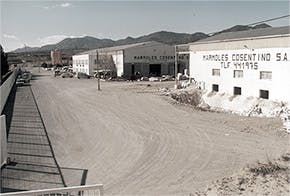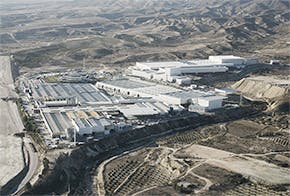ANDALUCIAN INDUSTRIES
List different industries that can be found in Andalucía. What famous brands do you know? 10'
-
-
-
-
-
-
___________
Read about the following industries in Andalucía and match elements of their machinery with the different texts. 10'
SEVILLA
Airbus Defence & Space has just celebrated the first ten years of its San Pablo Sur factory in Seville with a festive open day for employees and their families. Through various recreational and informative activities, such as augmented reality games, access to the interior of aircraft, and a spectacular air show, it has managed to showcase the exciting work that lies behind the engineering and manufacture of aircraft. This is an industrial sector that directly and indirectly creates a significant number of highly skilled jobs, which has major benefits for the regional and national community.
Airbus DS has three factories in Seville, a present-day reflection of an aeronautical manufacturing tradition that dates back to the very origin of aviation.
Seville, along with a dozen other cities around the world, forms part of a select group of facilities that have the means to design, assemble and test a complete aircraft. These facilities have been here since practically the origin of aviation thanks to historical companies like Hispano Aviación and CASA. Current companies, such as Alestis and Airbus Defence & Space, have inherited their experience and knowledge.
Airbus has a total of three plants around the city of Seville: Tablada and San Pablo, which is divided into North and South. To learn about the origin and history of these factories we must go back more than a century, to the neighbourhood of Tablada, the birthplace of aeronautics in Seville.
ALMERIA
The Background
- ECO – recycled surface
- SENSA – granite surface with anti stain protection
- DEKTON – ultra-compact surface
During the 18th century, the traditional sugar cane manufacturing process went into crisis which led to an incredible transformation of the agricultural plain and an important redistribution of the lands. As a consequence, almost the whole sugar cane crops disappeared and were replaced at the beginning of 1800 by cotton crops.
At the end of the 40s, the sugar cane manufacture came back thanks to the up-dating of the machinery with the use of the steam as the main force to make the mills work, the evaporation in a vacuum and the boiling processes as well as the use of turbines to purge. The whole development and use of these methods made the productivity grow and resulted in the return of the sugar cane production as single crop farming in the agricultural plain.







Comments
Post a Comment